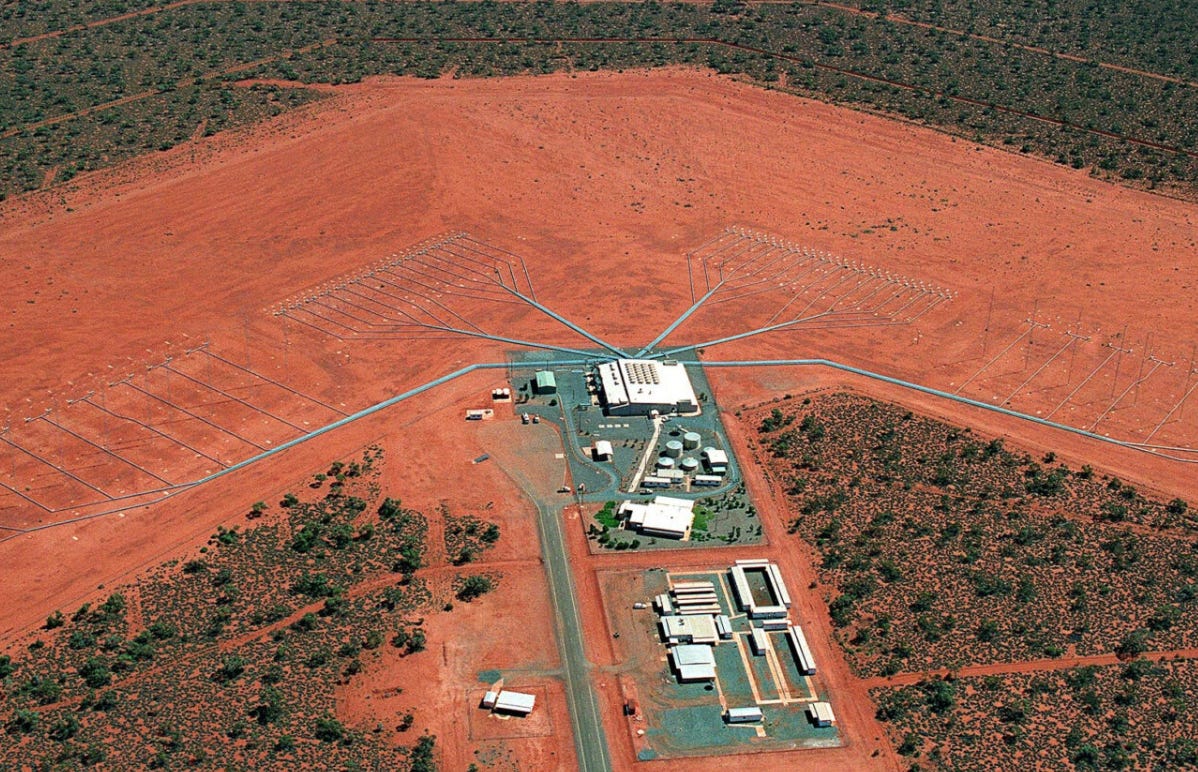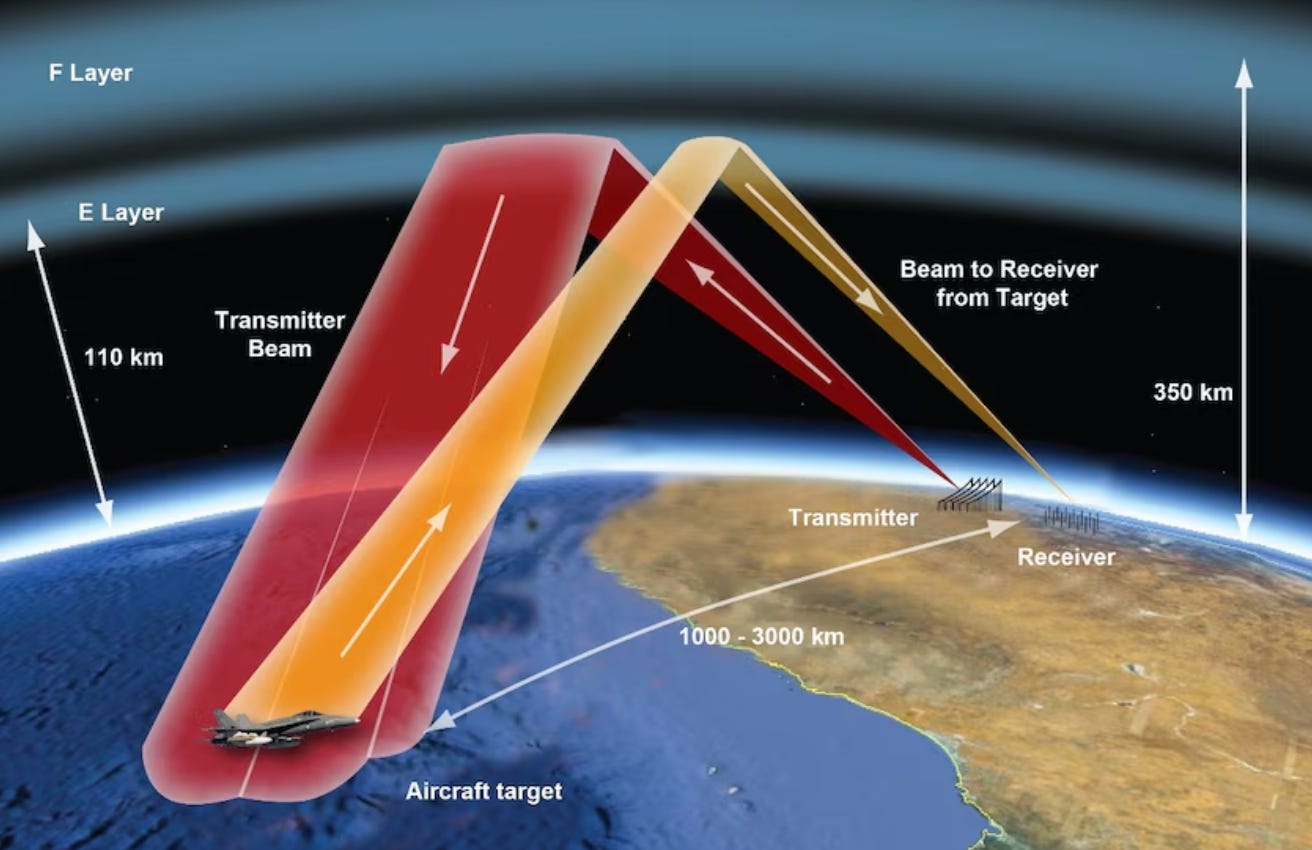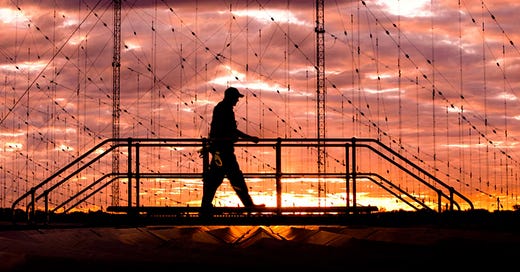MAKICHUK: From Australia with love: Canada targets JORN system
Radar network capable of monitoring vast stretches of the Arctic and beyond
A bunch of poles sit side by side, in the Australian outback.
In all, it stretches three kilometres in the distance.
And guess what?
Canadian Prime Minister Mark Carney, who has hit the ground running, wants it!
What exactly is it?
It’s the answer to our Arctic military problems.
These posts are antennas — 480 sets of them — and they are just one part of a vast radar system that lets Australia monitor the sky and sea thousands of kilometres from the shores of Down Under.
The system is called JORN, which stands for Jindalee Operational Radar Network. Jindalee is an Aboriginal word that means “the place the eye cannot see.”
"It's critical for Australia," the nation's Chief Defence Scientist Professor Tanya Monro told the Australian Broadcasting Corporation (ABC).
According to the report, this system is a world leader in over-the-horizon radar. And Canada has taken note, announcing plans last month to spend CDN $6.5 billion to purchase JORN for its Arctic defence.
"It really is a very significant milestone," Professor Monro told ABC.
"It is the biggest defence export proposed by quite some margin, and it really holds up the extraordinary things we can do in Australia when we put our minds to it and commit."
JORN is the product of 50 years of development by the Commonwealth's Defence Science and Technology Group (DSTG), the report said.

Aside from Laverton in West Australia, it also operates from stations near Alice Springs in the Northern Territory and Longreach in Queensland to give Australia unsurpassed surveillance capabilities up to 3,000 kilometres away.
The radar's operations centre is at RAAF Base Edinburgh, north of Adelaide, and across the road is a vast DSTG site where research leader Dr Joe Fabrizio heads a team that constantly tweaks the high frequency radio waves that give JORN its edge, the ABC report said.
Unlike conventional radars, JORN transmits high frequency radio waves 110 kilometres up into the ionosphere, where they bounce back to the Earth's surface from above.
Objects underneath — like planes or ships on the ocean surface — are detected when waves reflect back to JORN's massive array of receivers, thousands of kilometres away.
"One of the key features of over-the-horizon radar is its down-looking viewing geometry," Dr Fabrizio told ABC.
In other words, all that low flying you see in movies like Top Gun Maverick to avoid radar won't work with JORN.
"An over-the-horizon radar can detect and track aircraft … the same size as a BAE Hawk 127, which is around 12-metres long, or larger aircraft, and ships the same size as an Armidale-class patrol boat which is roughly 56-metres long," Dr Fabrizio told ABC.
Defence journalist Murray Brewster from Canada's CBC said JORN is just the sort of system needed in the Arctic.
Canada has been under pressure from the US to ramp up defence spending, especially in the far north where its Cold War-era radar stations need to be replaced.
"It's been a few years that Canada has been in the market for this," Brewster told ABC.
So new, that when Canada's new prime minister Carney announced the deal to purchase JORN, many in the defence community were stunned.

Could this be the same Canada? The Canada that has let its military decline? The Canada that kicks cans down the road, and never makes a decision?
For example, it has taken so damn long, to replace it’s aging F-18 fighter jets, in 2019 it bought used ones from Australia to fill the gap until new planes arrive.
Well, things have apparently changed.
Carney spoke with Australian Prime Minister Anthony Albanese and decided to buy the radar. The United States and Australia had been in talks about the over the horizon network, but Canada now appears to have leapt over America’s head.
“Today, I’m announcing that our government will be working with our long-standing defence and security partner Australia to build a new, long-range, over-the-horizon military radar system,” said Carney.
“[It] will enable Canada to detect and respond to both air and maritime threats over our Arctic both faster and from further away. It will most fundamentally keep all Canadians safe.”
An official statement from Carney’s office described JORN as “a key component of Canada’s NORAD modernization plan” to detect and deter threats across the country’s vast northern reaches.
“Collaboration with Australia on this critical technology,” the statement says, “will further deepen our long-standing bilateral defense relationship, while supporting Canada’s commitment to strengthening North American defenses in partnership with the United States.”

Albanese also pointed to the importance of Australia diversifying its trade relationships.
“It’s important that we develop that diverse series of relationships and Canada is a very important one, we have so much in common,” he said
There is another advantage, to JORN.
It’s not American!
"[The purchase] presented itself as a political opportunity for Canada to not wean itself off of the US defence industrial complex entirely, but certainly make a political point," Brewster told ABC.
There are few details about how the JORN purchase will unfold, but Professor Monro believes this time Canada intends to move much faster.
"It's very clear that Canada are moving with urgency, because they also have some really pressing needs to be able to surveil their northern reaches across the Arctic," she said.
Russian and Chinese activity in Arctic waters has increased, and Canada can’t afford to dawdle any longer.
"The government needs to demonstrate not only to the United States but to other major allies that it is taking the defence of its own territory seriously," Brewster told ABC.




